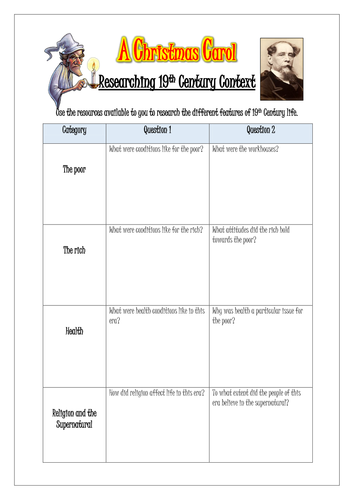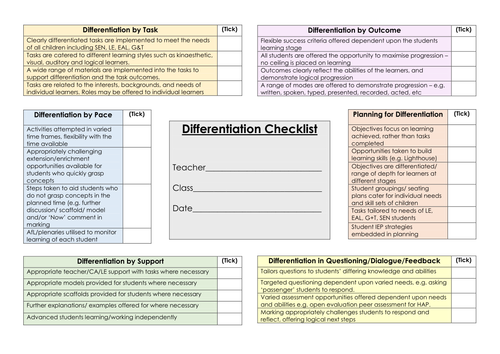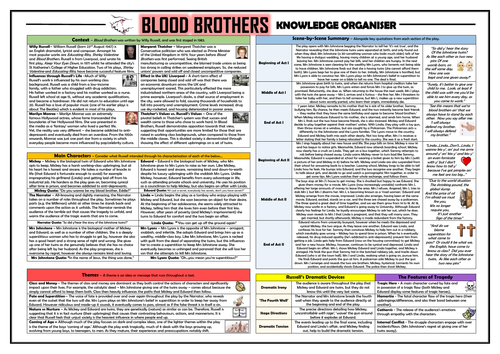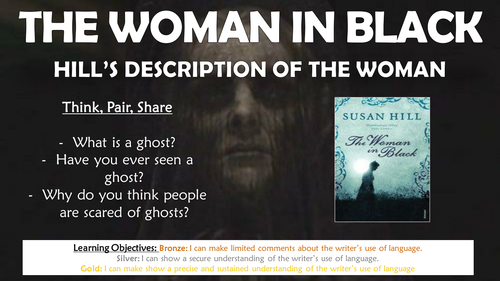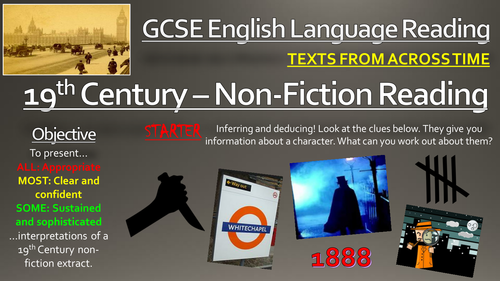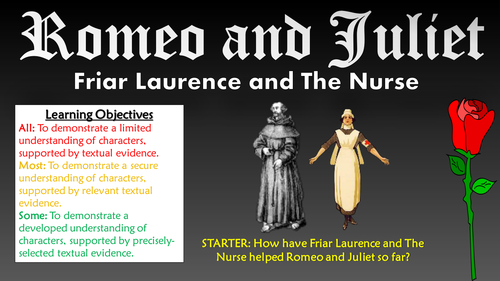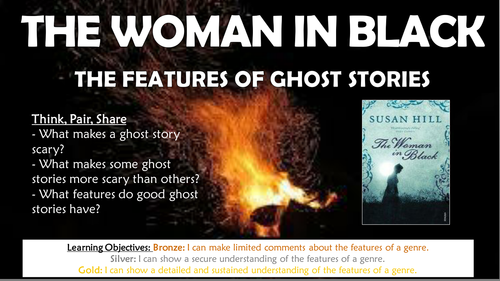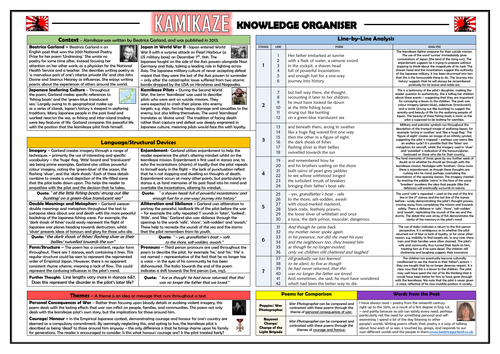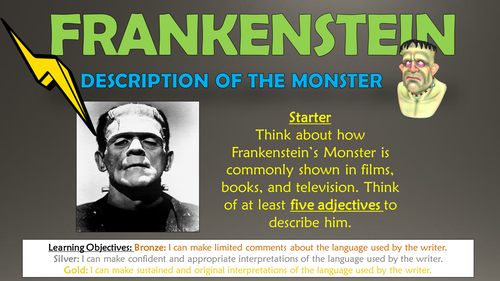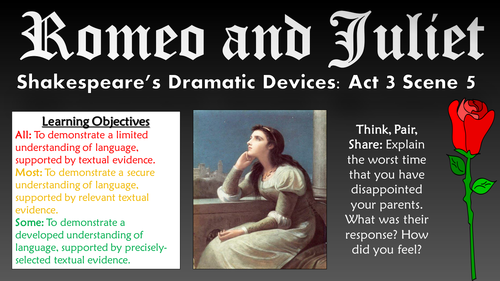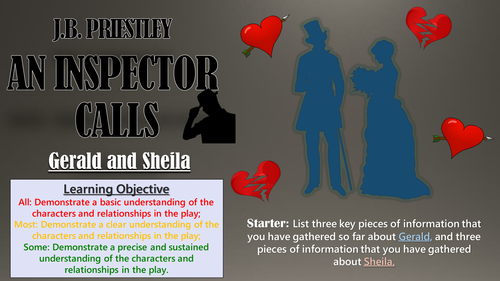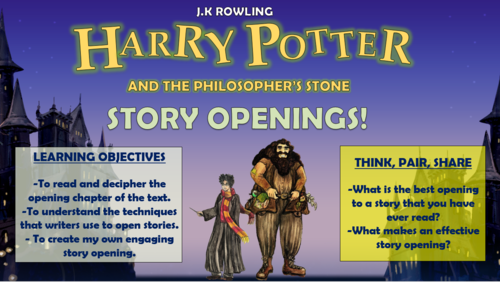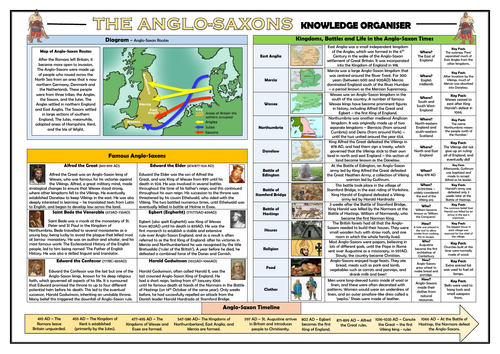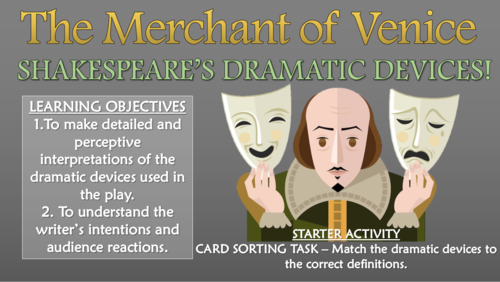
3k+Uploads
1969k+Views
2279k+Downloads
English

A Christmas Carol: The Context of Victorian Britain!
This engaging and informative lesson students to make sustained and developed links between Dickens’ A Christmas Carol and its social and historical context. In particular, students learn about the harsh treatment of the poor in Victorian society, the selfishness and cruelty of those in power, and attitudes towards sin, religion, and the supernatural. The lesson explores how Dickens explores these ideas through the allegorical nature of the text.
The lesson follows a step-by-step learning journey, in which children learn through:
- Understanding key information about Charles Dickens, his life, and influences;
- Researching and sharing key contextual understanding about the rich, poor, healthcare, and religion in the 19th Century;
- Reading Stave 1 of ‘A Christmas Carol’ and identifying evidence of contextual influences;
- Analysing how Dickens presents his views about the cruelty of 19th Century life through the opening of the text;
- Peer assessing each other’s learning attempts.
Included is:
- Whole lesson PowerPoint - colourful and comprehensive;
- Extract - Chapter 1 of A Christmas Carol;
- Template for researching 19th Century life (and completed answer sheet for teachers);
- Analysis template with success criteria for creating well-structured responses;
- Comprehensive lesson plan.
There are also opportunities for group learning, peer assessment, and whole class discussion. This was originally taught to mixed ability year 10 groups, but can easily be differentiated for groups of different ages and abilities.
All images are licensed for commercial use, and image rights are listed on the last page of the presentation.

Learning Walk/ Teacher Development Checklists
These comprehensive checklists have been created to aid school leaders when performing learning walks with a particular focus e.g. questioning, differentiation, etc. Clearly structured and organised, they present a central idea surrounded by a breakdown of a number of its key components.
For the user, this layout provides a simple reference list of each of the desirable skills, categorised appropriately. The checklists also provide an alternative to regular feedback methods, which often focus too heavily on the standard or ‘judgement’, as opposed to being a developmental tool.
Alternatively, these are really handy for teachers looking to develop their practice in the key teaching areas listed below. Included in the pack are checklists for:
-Questioning
-Differentiation
-Utilising Resources (including support staff)
-Engagement
-Building Literacy Skills
-Planning and Expectations
-Building Learning Power
-A blank template for you to design your own based upon your own focus
Note: The checklists offer a range of desirable strategies that teachers should look to implement over time - it would be damaging to expect teachers to utilise each of these strategies in every lesson!
Many Thanks

Blood Brothers Knowledge Organiser/ Revision Mat!
This detailed and visually-appealing resource offers a complete reference point for students learning or revising Willy Russell’s ‘Blood Brothers.’ It contains comprehensive sections on:
Context;
Scene by Scene Summary (with quotes);
Main Characters;
Themes;
Russell’s Dramatic Devices;
The Features of Tragedy.
Key words and ideas are underlined for easy reference. The resource is designed to be printed onto A3, and is provided as both a PDF and a Word version (so that you can edit if you want to). All images used are licensed for commercial use and are cited on a separate document (included).

The Woman in Black: Hill's Description of the Woman!
This engaging and informative lesson enables students to make precise and sustained interpretations regarding Susan Hill’s portrayal of the title character in The Woman in Black. In particular, they consider how the language techniques used (e.g. similes, adverbs and alliteration) are used to introduce and develop the mysterious woman each time that she appears.
The lesson follows a step-by-step learning journey, in which children learn through:
- Defining the key conventions of ghostly characters;
- Understanding and exemplifying key descriptive devices;
- Reading extracts introducing and developing the woman, comprehending key meanings;
- Analysing how the features of Hill's language help to create a chilling portrayal of the woman;
- Peer assessing each other's learning attempts.
Included is:
- Whole lesson PowerPoint - colourful and comprehensive;
- Extracts from 'The Woman in Black' in which the woman appears;
- 'Hill's Language' worksheet (and answer sheet for teachers);
- Cards for descriptive devices sorting activity
- Analysis template with success criteria for creating well-structured responses;
- Comprehensive lesson plan.
There are also opportunities for group learning, peer assessment, and whole class discussion. This was originally taught to mixed ability year 10 groups, but can easily be differentiated for groups of different ages and abilities.
All images are licensed for commercial use, and image rights are listed on the last page of the presentation.

New GCSE English Language Reading: 19th Century Non-Fiction
These informative and engaging resources enable students to build the skills needed to interpret and analyse 19th Century non-fiction texts. This will aid students through the new Paper 2 Section A of GCSE English Language - for which they need to become confident readers of 19th, 20th, and 21st Century non-fiction texts. These resources give students a strong foundation of knowledge of features of non-fiction texts in the 19th Century, using newspaper stories from the time based on 'Jack the Ripper' as the predominant examples. There are easily enough resources for at least two lessons within this resource pack.
Students learn through the following tasks:
- Inferring and deducing contextual knowledge through an interactive starter task;
- Understanding the features of London in 1888 through a video introduction;
- Building close reading skills through a study of a non-fiction extract about Jack the Ripper;
- Answering exam-style questions interpreting and inferring the key meanings in the text;
- Using models and templates to write extended analysis responses about the language used in the non-fiction extract;
- Peer assessing their partners' learning attempts.
The following resources are provided:
- Engaging and colourful step-by-step PowerPoint;
- Jack the Ripper newspaper extract;
- Teacher lesson guidance;
- Interpretation worksheet;
- Analysis worksheet;
- Writing to analyse.
All images are licensed for commercial use, and are cited on the final slide of the PowerPoint.

Romeo and Juliet: Friar Laurence and The Nurse!
This lesson enables students to gain a detailed understanding of the characters of Friar Laurence and The Nurse in William Shakespeare’s tragedy Romeo and Juliet. Students learn to demonstrate a developed understanding of their character traits, relationships with the title characters, and impact upon plot developments. Students also learn to empathise with the two characters, inferring and interpreting the motives behind their actions.
The lesson utilises a range of tasks, that require students to be attentive and interactive learners. It follows this learning journey:
- Remembering and understanding the impact of Friar Laurence and The Nurse up to Act IV;
- Reading and interpreting Act IV, particularly interpreting and inferring the key involvement of Friar Laurence and The Nurse;
- Identifying and analysing the key features of their characters;
- Empathising with the two characters through a fun and interactive drama activity, in order to understand their motives a little better;
- Anlaysing their impact upon the plot in Act IV, including their influence upon the two title characters;
- Peer/self-evaluating the learning in the lesson.
Included in this resource pack are:
- A well-presented, thorough, and informative, whole-lesson PowerPoint presentation;
- Resources for the reading and interpreting activity - including a teacher answer guide;
- Full Act IV transcript with space for notes;
- 'In Your Shoes' cut-out soles for the development task;
- A template to help scaffold the main task, complete with P.E.E instructions;
All images in this resource are licensed for commercial use, and are cited on the final slide of the lesson presentation.

A Christmas Carol: The Ghost of Christmas Past!
This engaging and informative lesson students to make insightful and developed interpretations of The Ghost of Christmas Past in Charles Dickens’ ‘A Christmas Carol.’ In particular, they explore the ghost’s physical appearance, actions, and mannerisms, and analyse the extent to which the ghost symbolises the power of memories.
The lesson follows a step-by-step learning journey, in which children learn through:
- Reading and understanding the key plot elements of stave 2 - in which The Ghost of Christmas Past appears;
- Identifying and exemplifying the key features of the ghost, including its appearance, actions, and mannerisms;
- Analysing the extent to which the ghost represents the power of memories;
- Peer assessing each other's learning attempts.
Included is:
- Whole lesson PowerPoint - colourful and comprehensive;
- Extract - Chapter 2 of A Christmas Carol;
- Features of The Ghost of Christmas Past Worksheet (and completed answer sheet for teachers);
- Analysis template with success criteria for creating well-structured responses;
- Comprehensive lesson plan.
There are also opportunities for group learning, peer assessment, and whole class discussion. This was originally taught to mixed ability year 10 groups, but can easily be differentiated for groups of different ages and abilities.
All images are licensed for commercial use, and image rights are listed on the last page of the presentation.

The Woman in Black: The Features of Ghost Stories!
This engaging and informative lesson enables students to show a detailed and sustained understanding of the conventions of effective ghost stories, through analysis of extracts from Susan Hill's 'The Woman in Black.' They study how individual features of subject matter (such as the setting and the hero) and language (e.g descriptive features) are used to create suspense and tension in the mind of the reader.
The lesson follows a step-by-step learning journey, in which children learn through:
- Defining the key elements of ghost stories;
- Planning a ghost story using the key features;
- Identifying the elements of ghost stories within key extracts of The Woman in Black;
- Analysing the effectiveness of Hill's features of ghost stories in The Woman in Black;
- Peer assessing each other's learning attempts.
Included is:
- Whole lesson PowerPoint - colourful and comprehensive;
- Extracts from the blurb and Chapter 1 of The Woman in Black;
- Template for creating their own ghost stories;
- Analysis template with success criteria for creating well-structured responses;
- Comprehensive lesson plan.
There are also opportunities for group learning, peer assessment, and whole class discussion. This was originally taught to middle-ability year 10 groups, but can easily be differentiated for groups of different ages and abilities.
All images are licensed for commercial use, and image rights are listed on the last page of the presentation.

Blood Brothers - Mickey and Edward!
This engaging and interesting lesson enables students to make clear and developed interpretations of the characters of Mickey and Edward in Willy Russell’s Blood Brothers. In particular, students infer and interpret key information about the characters from their introductions into the play, before tracking how their characters develop through close analysis of their key actions and quotations.
The lesson utilises a range of tasks, that require students to be both independent and collaborative learners. It follows this learning journey:
Considering the idea of money ‘buying happiness’ and applying this concept to characters in the play;
Engaging with the opening to the play and interpreting how Mickey and Edward are presented;
Tracking how the characters are developed throughout the play, through engagement with their key actions and quotations;
Creating character profiles which demonstrate their understanding of Mickey and Edward’s introduction and development throughout the play;
Self-evaluating their learning in the lesson.
Included in this resource pack are:
A well-presented, thorough, and informative, whole-lesson PowerPoint presentation;
Appropriate extracts from the play;
A template morale graph to enable students to track the development of characters;
Character profile templates to help scaffold the main task, complete with quotes from the text;
A comprehensive teacher guidance form/lesson plan to assist delivery.
Resources are provided in both Word (for easy editing)and PDF (to prevent formatting issues between computers).
All images in this resource are licensed for commercial use, and are cited on the final slide of the lesson presentation.

The Sign of Four Knowledge Organiser/ Revision Mat!
This detailed and visually-appealing resource offers a complete reference point for students learning or revising Arthur Conan Doyle's 'The Sign of Four.' It contains comprehensive sections on:
- Context;
- Chapter by Chapter Summary (with quotes);
- Main Characters;
- Themes;
- Doyle's Language Devices;
- Features of Detective Novels.
Key words and ideas are underlined for easy reference. The resource is designed to be printed onto A3, and is provided as both a PDF and a Word version (so that you can edit if you want to). All images used are licensed for commercial use and are cited on a separate document (included).

Kamikaze - Beatrice Garland - Knowledge Organiser/ Revision Mat!
This detailed and visually-appealing resource offers a complete reference point for students learning or revising Beatrice Garland’s power and conflict poem 'Kamikaze.’ It contains comprehensive sections on:
Context;
Line-by-Line Analysis;
Poetic Devices/ Language Devices;
Themes;
Form/Structure;
Poems for Comparison;
The Poet’s Influences.
Key words and ideas are underlined for easy reference. The resource is designed to be printed onto A3, and is provided as both a PDF and a Word version (so that you can edit if you want to). All images used are licensed for commercial use and are cited on a separate document (included).

Frankenstein: Shelley's Description of the Monster!
This lesson aims to improve students’ understanding of the descriptive language used to depict the monster in Chapter 5 of Mary Shelley’s horror novel 'Frankenstein.' The lesson places a particular focus upon the descriptive language devices employed by Shelley, in order to create a clear image of the monster’s appearance in the reader's mind, and also to describe Victor’s strong reaction to his creation. By the end of the lesson, students demonstrate an ability to make sustained and original interpretations of the language used by the author.
The lesson follows a step-by-step learning journey, in which children learn through:
- Considering how their preconceptions about the monster have been influenced by modern media and representations;
- Read and understand a key extract from the beginning of chapter 5 - the point at which the monster comes to life;
- Infer and interpret the key developments of the extract, including Frankenstein's changing feelings and the monster's ambiguous actions;
- Identifying and analysing some of the key descriptive devices used by Shelley to create an image of the monster;
- Analysing the effect of the descriptive devices upon the reader;
- Peer assessing each other's learning attempts.
Included is:
- Whole lesson PowerPoint - colourful and substantial; (including an animated Frankenstein's monster to guide them through the lesson);
- Descriptive devices worksheet (and a teacher answer sheet);
- Extract from the beginning of Chapter 5;
- Inferring and Interpreting worksheet;
- Analysis template with success criteria for creating well-structured responses;
- Comprehensive lesson plan.
There are also opportunities for group learning, peer assessment, and whole class discussion. This was originally taught to middle-ability year 9/10 groups, but can easily be differentiated for groups of different ages and abilities.
All images are licensed for commercial use, and image rights are listed on the last page of the presentation.

Romeo and Juliet: Shakespeare's Dramatic Devices
This lesson enables students to gain a detailed understanding of the dramatic devices used by William Shakespeare in his romantic tragedy Romeo and Juliet. Students learn to demonstrate a developed understanding of features such as dramatic irony, stage directions, and puns, through analysis of precisely-selected textual evidence. The main scene analysed throughout the lesson is Act III Scene V, in which Juliet defies the orders of her parents to marry Count Paris.
The lesson utilises a range of tasks, that require students to be attentive and interactive learners. It follows this learning journey:
- Defining the key dramatic devices;
- Contextualising Juliet's behaviour in the patriarchal society of the time;
- Reading and interpreting Act III Scene V, interpreting and inferring the key meanings;
- Understanding the key themes throughout the scene, including Juliet's struggle between obeying orders and following love;
- Identifying and analysing the key dramatic devices used throughout the scene;
- Peer/self evaluating the learning in the lesson.
Included in this resource pack are:
- A well-presented, thorough, and informative, whole-lesson PowerPoint presentation;
- Resources for the reading and interpreting activity - full scene transcript with space for notes;
- A closer analysis worksheet based upon Shakespeare's dramatic devices;
- Dramatic devices definition cards;
- A template to help scaffold the main task, complete with P.E.E instructions;
- A challenging and thought-provoking worksheet, and an answer sheet for the teacher.
All images in this resource are licensed for commercial use, and are cited on the final slide of the lesson presentation.

An Inspector Calls: Gerald and Sheila
This interesting and engaging lesson enables students to build their understanding of the relationship between Gerald and Sheila, two of the main characters in ‘An Inspector Calls.’ In particular, students learn about about how both characters contribute to the downfall of Eva Smith, and how their relationship is affected as details of their actions emerge.
The lesson follows a clear, logical, bite-size learning journey, which guides students towards differentiated learning objectives. Over the course of this journey, they become able to:
- Recall and understand the key features of Gerald and Sheila's character profiles;
- Link Gerald and Sheila to the historical context of the play;
- Read and understand the section of the play in which Gerald is interviewed by the inspector;
- Analyse the effect of Gerald's revelations on the relationship of Gerald and Sheila;
- Create a diary-entry piece in which they consider Gerald's character and relationships with both Sheila and Daisy Renton;
-Peer/self-assess learning attempts.
This resource pack includes:
- A visually engaging whole-lesson PowerPoint presentation;
- A clear and interesting worksheet for the development task (with answer sheet);
- An extract from Act 2 of the play for students to read and interpret;
- Guidance for completing diary entries;
- A detailed lesson plan, complete with what the teacher and students should aim to achieve at each stage of the lesson.
All images are licensed for commercial use, and are cited on the final slide of the PowerPoint.

Harry Potter and the Philosopher's Stone - Story Openings!
This engaging and informative lesson enables students to understand the key techniques used by J.K Rowling in her story opening of 'Harry Potter and the Philosopher’s Stone.' In particular, students comprehend the plot and information in the opening chapter of Harry Potter and analyse what makes the opening effective, before utilising this understanding to compose their own imaginative story opening.
The lesson follows a step-by-step learning journey, in which children learn through:
- Collectively defining the features of effective story openings;
- Reading the opening to Harry Potter and the Philosopher's Stone, identifying the story opening techniques and comprehending the key events and information in the chapter;
- Analysing the effectiveness of each of Rowling's story opening techniques;
- Creating their own engaging story openings, utilising story opening techniques effectively and imaginatively throughout;
- Peer assessing each other's learning attempts.
Included is:
- Whole lesson PowerPoint - colourful and comprehensive;
- The opening chapter of Harry Potter and the Philosopher's Stone (freely available online);
- Effective Story Openings analysis template;
- Teacher answer sheet;
-Comprehensive lesson plan.
All resources are provided in Word (for easy editing) and PDF (to ensure formatting remains fixed between different computers).
There are also opportunities for group learning, speaking and listening, peer assessment, and whole class discussion. I originally used these resources with year 7/8 classes, however colleagues have used them for between years 3 and 10 with some adaptations.
All images are licensed for commercial use, and image rights are listed on the last page of the presentation.

Exceptional Expanded Noun Phrases!
This engaging and detailed resource pack has been designed to make the learning of expanded noun phrases (particularly prominent in the new curriculum) easily accessible, engaging and interesting for all children. Throughout the lesson, students learn to improve their skill at using appropriate, concise, and precise expanded noun phrases within their own writing compositions.
The lesson follows a clear, logical, bite-size learning journey, which guides students towards differentiated learning objectives. Over the course of this journey, they become able to:
- Define what expanded noun phrases are;
- Identify varied and interesting nouns and adjectives;
- Analyse and evaluate what it is that makes some nouns and adjectives more effective than others;
- Utilise prepositions in order to open up new levels of detail in their own expanded noun phrases;
- Write an extended piece with the employment of exceptional expanded noun phrases;
-Peer/self-assess learning attempts.
This resource pack includes:
- A visually engaging whole-lesson PowerPoint presentation;
- A clear and interesting worksheet for the development task;
- Picture resources for the main activity;
- A detailed lesson plan, complete with what the teacher and students should aim to achieve at each stage of the lesson.
All images are licensed for commercial use, and are cited on the final slide of the PowerPoint/ the bottom of worksheets.

The Anglo-Saxons - Knowledge Organiser/ Revision Mat!
This clear, detailed and visually-appealing resource offers a complete reference point for students learning or revising knowledge relating to the Anglo-Saxons. It contains comprehensive sections on:
Anglo-Saxons routes map (annotated);
Anglo-Saxons Leaders and famous Anglo-Saxons;
Anglo-Saxons timeline;
Anglo-Saxons battles and places;
Anglo-Saxons daily life.
The resource is designed to be printed onto A3, and is provided as both a PDF and a Word version (so that you can edit if you want to). All images used are licensed for commercial use and are cited on a separate document (included). It is most suitable for children in KS2 and KS3.

London - William Blake - Knowledge Organiser/ Revision Mat!
This detailed and visually-appealing resource offers a complete reference point for students learning or revising William Blake’s power and conflict poem 'London.’ It contains comprehensive sections on:
Context;
Line-by-Line Analysis;
Poetic Devices/ Language Devices;
Themes;
Form/Structure;
Poems for Comparison;
The Poet’s Influences.
Key words and ideas are underlined for easy reference. The resource is designed to be printed onto A3, and is provided as both a PDF and a Word version (so that you can edit if you want to). All images used are licensed for commercial use and are cited on a separate document (included).

Frankenstein Knowledge Organiser/ Revision Mat!
This detailed and visually-appealing resource offers a complete reference point for students learning or revising Mary Shelley's 'Frankenstein.' It contains comprehensive sections on:
- Context;
- Chapter by Chapter Summary (with quotes);
- Main Characters;
- Themes;
- Shelley's Language Devices;
- Features of Gothic Novels.
Key words and ideas are underlined for easy reference. The resource is designed to be printed onto A3, and is provided as both a PDF and a Word version (so that you can edit if you want to). All images used are licensed for commercial use and are cited on a separate document (included).

The Merchant of Venice - Shakespeare's Dramatic Devices!
This engaging and informative lesson enables students to make clear and precise interpretations regarding Shakespeare’s use of dramatic devices in The Merchant of Venice. In particular, students read and understand several extracts from the play, before identifying and then analysing the effect of the dramatic devices that Shakespeare employs throughout.
The lesson follows a step-by-step learning journey, in which children learn through:
Defining and exemplifying a variety of dramatic techniques;
Reading and comprehending a number of key events from the play, identifying the dramatic devices utilised;
Analysing Shakespeare’s use of dramatic devices through considering context and the effect on the audience;
Creating their own dramatic device-filled playscripts, and evaluating their partner’s attempts;
Self assessing their learning through the lesson;
Included is:
Whole lesson PowerPoint - colourful and comprehensive;
Dramatic devices cards for the card-sorting activity;
Analysis worksheets - different degrees of difficulty (asides, dramatic irony, dramatic tension & soliloquy);
A model example of a completed analysis worksheet;
Comprehensive lesson plan.
Resources are provided in PDF (to maintain formatting), Word (so that they are easily editable) and also in zipfiles.
The lesson contains opportunities for group learning, speaking and listening, peer assessment, and whole class discussion. I originally used these resources with year 10 and 11 classes, however colleagues have used them for between year 9 and year 13 with some adaptations.
All images are licensed for commercial use, and image rights are listed on the last page of the presentation.

